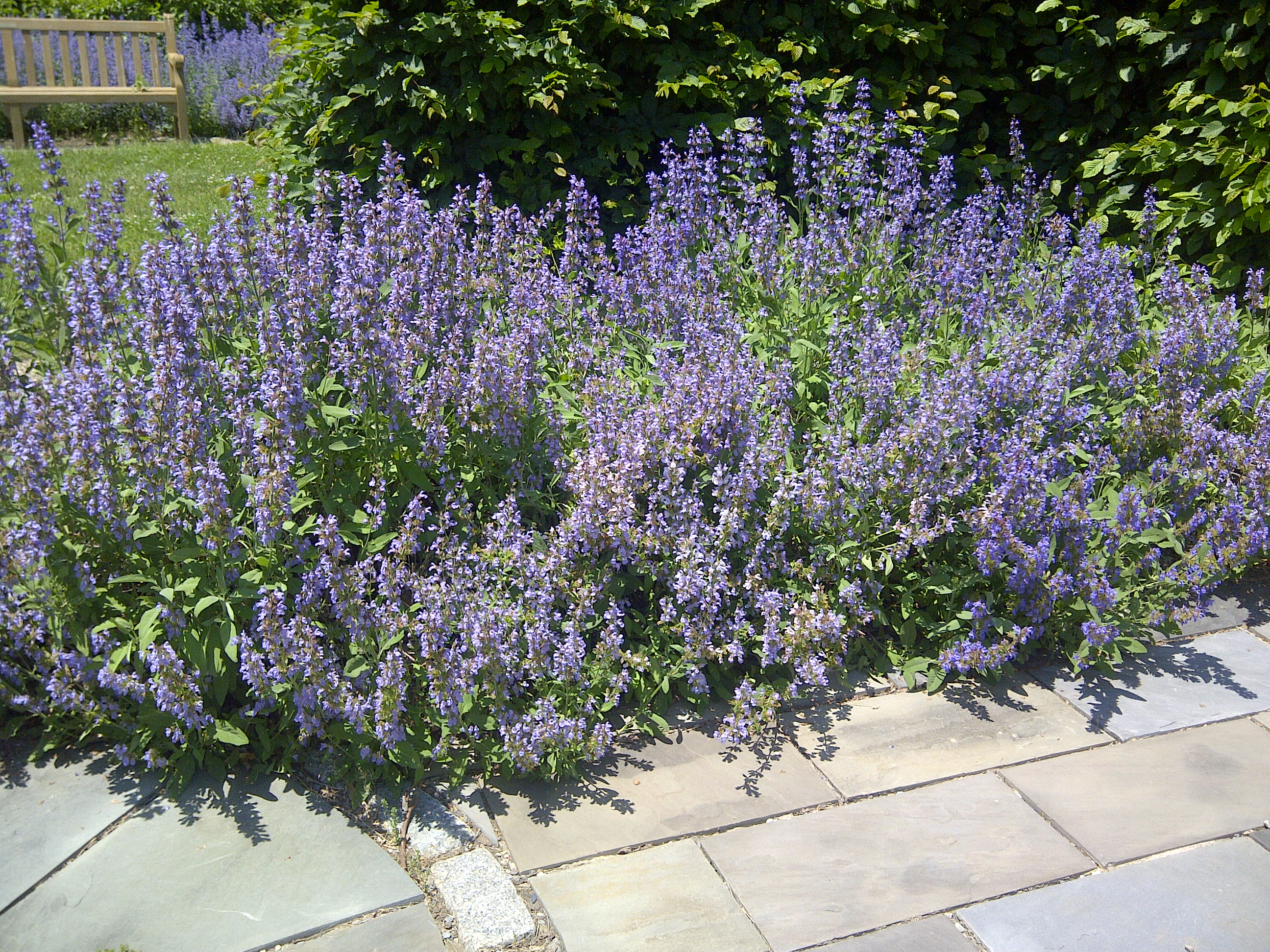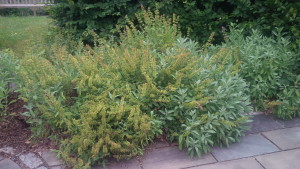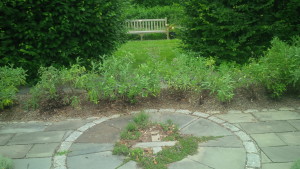The sage hedge is one of my favorite parts of the herb garden at Rutgers Gardens. When it is in bloom in the spring, it is magnificent. Sage is a salvia (Salvia officinalis) with flowers that are just as beautiful as the salvias in my flower garden.
The problem is that sage starts getting woody within three to five years. The sage hedge at Rutgers Gardens is at least five years old. It’s woody and overgrown. When it’s not blooming, it’s an ugly mess. I’m planning on replacing it next year so this year I thought that I would experiment a little with it and give it a hard pruning. I’ve only hard pruned lavender and rosemary, never sage. I don’t know if it will improve the plants or kill them.
Pruning promotes growth in plants. Hard pruning is when you remove most of the plant or at least the oldest parts of the plant to force it to grow new foliage to replace what you have removed. Most woody plants like the shrubs in your yard are pruned in the early spring before they break dormancy. This also allows you to see the shape of the plant easier than when it is fully leafed out so that you can properly prune it as well as remove any crossed branches.
I recommend pruning woody herbs such as sage after they bloom. The buds for their flowers were formed the previous year so if you prune away parts of the plant, you are removing the buds and the plant will either not flower well or maybe not flower at all.
I will have to add sage to my list of herbs that can take a hard pruning – it’s only been about a month since I started but the thick woody stems are already sprouting new growth.
It will interesting to see what the hedge looks like next spring.
To be continued . . .




